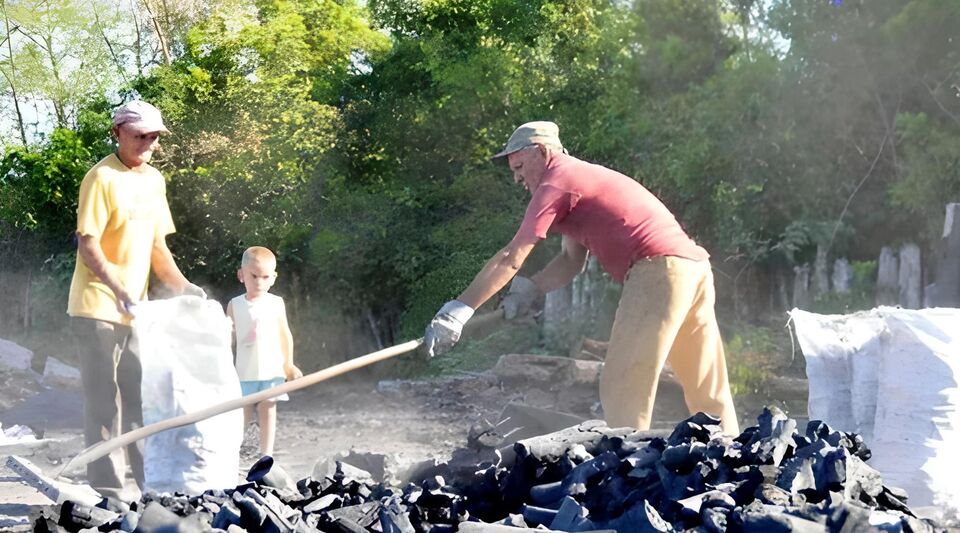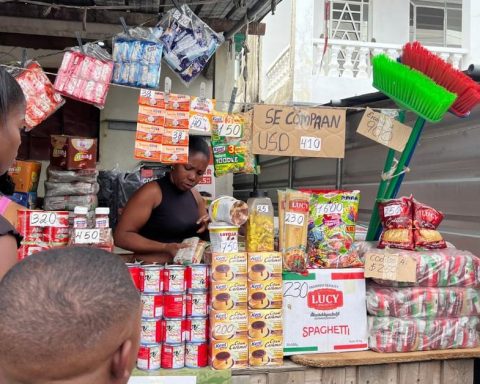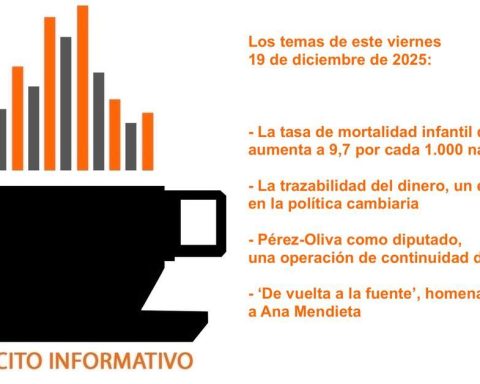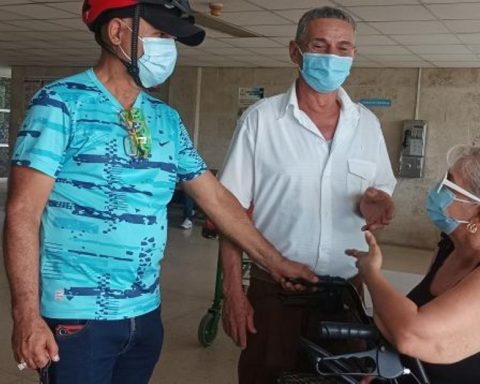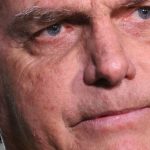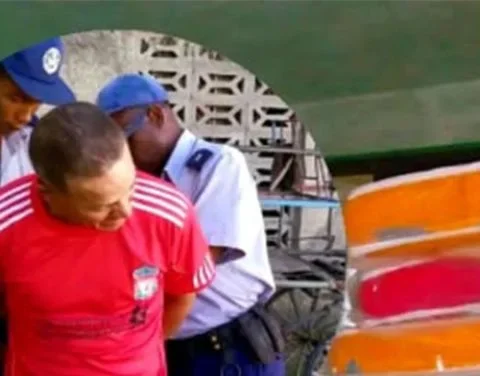The hands of Emilio, a 66-year-old farmer, say everything about his trade: rough, firm, and smeared with soot. For decades he has gotten up at dawn together with his brother Daniel and they go to work in the fields of Vueltas, a town a few kilometers from Camajuaní, in Villa Clara. Five years ago, when blackouts became common again in Cuba, they decided to build coal ovens.
Emilio translates his business into figures: up to 25 sacks are removed from each oven and each one is worth 300 pesos. What the resellers do next is not his problem. The effort is enormous to achieve an acceptable result, but the market is on the rise. The coal miners are one of the few sectors that have benefited from the scarcity of fuel, the lack of gas and the instability of the National Electric System.
Emilio’s house –the typical Guajiro construction, made of wood– is on the side of a dam, a few meters from his ovens. He likes to brew coffee before the sun rises, he takes his first puffs of tobacco and, to stay in shape, he stretches before going to work.
To make a coal oven, you have to prepare the process a month before. He and Daniel sharpen their machetes and go out to cut marabou. They pile up the trunks and put them to dry for several weeks, in a place where the sun hits them well. For the transfer they use a cart towed by oxen, but the hauling of the sticks is their responsibility. Between the sun and the weight of the trunks, it is an overwhelming routine for two retirees, but you have to live for something, Emilio affirms with resignation.
After five years of work, the soot doesn’t leave the body no matter how much they wash it. Often, Emilio calls one of his neighbors at dawn, to share his coffee. “Did you bathe well yesterday?” the man often asks, pointing to a spot behind the ears or on the chickadee’s elbow. Emilio laughs and goes looking for his brother to start working again.
Daniel helps him lift the woodpile for the oven. They arrange the trunks one next to the other, and they form five or six layers of sticks, depending on the thickness. Then they cover everything with a layer of grass, another of earth and some palm fronds. The oven is lit from the center. After a week of slow burning, the fire will have reached the surface. The result: the yellowish pieces of marabou will have turned into gleaming pieces of charcoal.
They have to spend the whole week watching over the pile, in case some accident happens or the fire gets out of control. While everyone sleeps, Emilio spends several awake nights in front of the wooden hills. There he must be watching in case the oven explodes or catches fire somewhere. “You could pass the coal and spoil it,” he says. “It’s like cooking.”
They have to spend the whole week watching over the pile, in case some accident happens or the fire gets out of control. While everyone sleeps, Emilio spends several awake nights in front of the wooden hills.
The process is difficult, but there is a lot of demand in the towns and cities. “In the last year the consumption of coal has increased and it shows, because many people come to the countryside looking for someone to sell. In the town everything has become complicated to cook, many do not have gas, there are blackouts and there is a great shortage of fuel right now,” he says.
At some point, Daniel explains, his main client was Gaviota, the hotel company managed by the Armed Forces and which, due to the proximity of the northern keys – one of the most important tourist poles on the Island – bought charcoal for cooking. However, the pandemic brought the suspension of contracts.
Surely, Emilio assumes, Gaviota will contact them again, but the brothers suspect that the business will not be favorable for them. “We would have to see,” says Daniel. “If they continue as before, there is no deal. After the Ordinance Task, individuals began to pay us 300 pesos for the sack. Before they paid 10, but the Government offered us 8. They always want to take it at a lower price and that is not suits us.”
“Young people don’t want to do this job,” laments Yuri, another 63-year-old retiree who gave up farming and sold his cattle. after suffering multiple robberies. In Rosalía, a rural town not far from Vueltas and Camajuaní, there are only four people who make charcoal. “We all comb gray hair,” says Yuri.

“Some boys from around here tried to start the business. When they saw the work that it takes to earn at least one sack, they immediately gave it up,” says the farmer. Yuri sells the can of coal for 100 pesos to a contact in Santa Clara, who comes to his house every month to pick up the merchandise. “I can’t give coal away,” he says, alluding to the rise in prices. “The job does not only consist of cutting the marabou, you also have to spend many sleepless nights, taking care of the piles.”
With the decrease in blackouts at the beginning of the year, the demand for coal fell. But the less optimistic know that as soon as the heat returns, the most prudent thing to do is to have an alternative on hand. Gas stoves, increasingly rare in homes, are also facing a supply shortage at the Villa Clara filling plant.
Although the most common thing in the field, Yuri notes, is still firewood. “People here don’t have much of a need for charcoal, but in a pinch, it’s always good to have a few cans with you,” she explains.
Bibian, a housewife from Camajuaní, remembers that in the eighties there was no electricity in the neighboring field of La Bajada. “My mom was used to cooking on charcoal and wood stoves,” she recalls. “When clothes had to be ironed, the irons were heated over the fire. For cooking, the same thing, and I even liked the taste of smoked food better.”
Coal is surly, he says. His method to light it is to make at least a couple of firebrands burn well: “Then I put a fan on them”
For Bibian, in the kitchen, firewood is superior to coal. “It burns much better, the embers last longer and retain heat better. The downside is that wood smoke affects your health a lot, it hurts your lungs. Coal smoke does less damage,” she says.
The situation of La Bajada did not improve during the Special Period. “The oil at that time was lost, there wasn’t even enough for transportation. So my husband went to the fields to see what he could get and returned with a sack of coal. It cost him 300 pesos. It was a lot, but from that “Every time the power went out I went to the stove and the coal got me out of trouble. My rice never spoiled again because of the blackout,” smiles Bibian.
Maritza, another housewife from Taguayabón, a neighboring town, shares Bibian’s opinion about the usefulness of charcoal in times of scarcity. Her stove is made of welded rods and she lights the coals by burning a piece of nylon, when, as is often the case, she has no oil. “They only give us fuel in the hurricane season, and very little, barely for two months,” she complains. Coal is surly, she says. Her method to light it is to get at least a couple of brands to burn well. “Then I put a fan on them to fan the flames and quickly look for the cauldrons.” The technique, which others also perform with a hair dryer, has never failed him. Although, of course, this can only be done when there is no blackout.
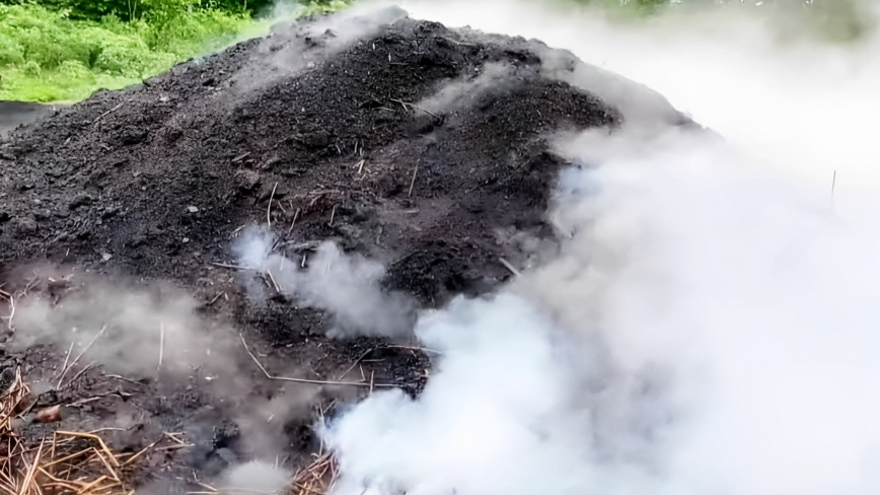
Ramón, 56, calculates that the price that used to be for a single sack of coal in Camajuaní – around 100 pesos – is now less than what a can costs. “Not everyone has gas, in the villages there is no firewood, it is not like in the countryside. There is no free fuel either. A sack of coal, for those who cook every day, lasts a little over a week” . The bills at the end of the month, he reflects, are scary.
The measure used by charcoal burners is an old square tin, jam or oil. The resale price of each can in Camajuaní is 150 pesos. The sack that is bought directly from the charcoal burner costs 300 pesos. The resale of the complete bag can reach 450 pesos. As the summer months and blackouts approach, the coal trade is reviving. Now, on Facebook or on the sales portal on-line Revolico, prices are rising at the rate of inflation. For Emilio, Daniel and Yuri, the effort and the long sleepless nights will have been worth it.
________________________
Collaborate with our work:
The team of 14ymedio He is committed to doing serious journalism that reflects the reality of deep Cuba. Thank you for accompanying us on this long road. We invite you to continue supporting us, but this time becoming a member of our newspaper. Together we can continue transforming journalism in Cuba.
